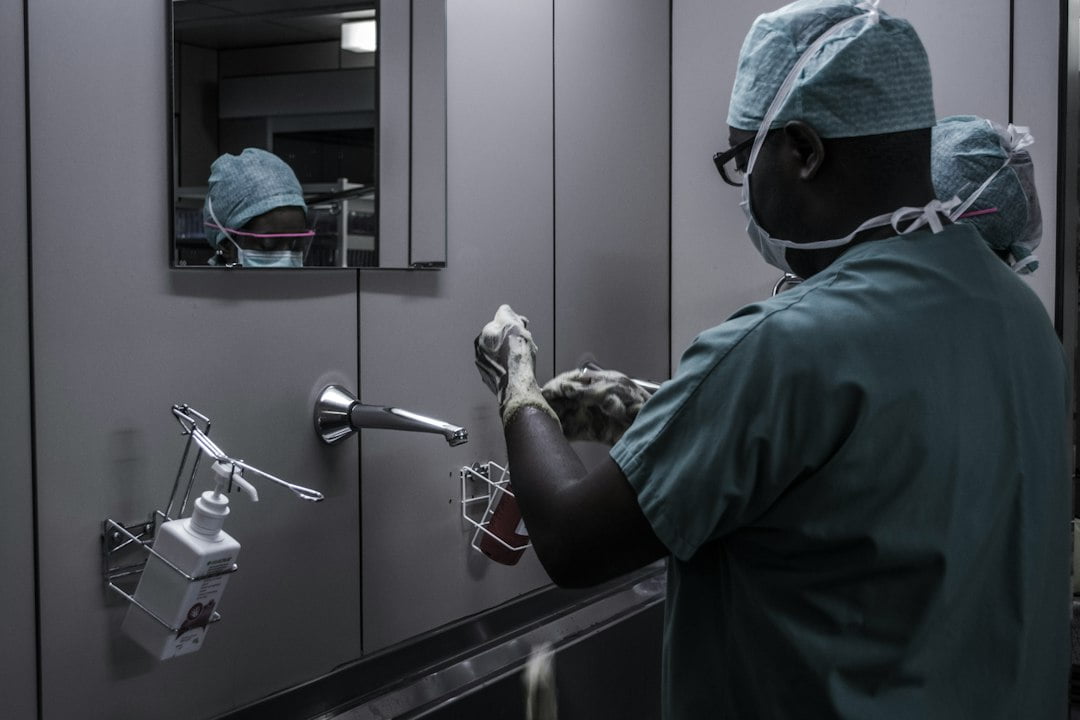
Sleep Apnea: Understanding the Silent Killer of a Good Night’s Sleep
Sleep apnea is a common sleep disorder that affects millions of people worldwide. It is characterized by pauses in breathing or shallow breaths during sleep. These pauses can last for a few seconds to a few minutes and can occur multiple times throughout the night. Sleep apnea disrupts the normal sleep cycle, leading to poor sleep quality and daytime sleepiness.
Recognizing and treating sleep apnea is important because it can have serious health consequences if left untreated. People with sleep apnea are at an increased risk of developing high blood pressure, heart disease, stroke, and type 2 diabetes. They may also experience daytime fatigue, difficulty concentrating, and mood disturbances. By addressing sleep apnea, individuals can improve their quality of life and reduce their risk of these complications.
Key Takeaways
- Sleep apnea is a common sleep disorder that causes breathing to repeatedly stop and start during sleep.
- There are two main types of sleep apnea: obstructive sleep apnea and central sleep apnea.
- Symptoms of sleep apnea include loud snoring, gasping for air during sleep, and excessive daytime sleepiness.
- Risk factors for sleep apnea include obesity, smoking, and family history.
- Treatment options for sleep apnea include continuous positive airway pressure (CPAP) therapy, oral appliances, and surgery, while lifestyle changes such as weight loss and quitting smoking can also help manage the condition.
Types of Sleep Apnea
There are three main types of sleep apnea: obstructive sleep apnea (OSA), central sleep apnea (CSA), and complex sleep apnea syndrome (CSAS).
Obstructive sleep apnea is the most common type and occurs when the muscles in the back of the throat fail to keep the airway open during sleep. This leads to repeated episodes of complete or partial blockage of the airway, resulting in pauses in breathing.
Central sleep apnea is less common and occurs when the brain fails to send the proper signals to the muscles that control breathing. Unlike OSA, there is no physical obstruction in the airway. Instead, the problem lies in the central nervous system.
Complex sleep apnea syndrome is a combination of both obstructive and central sleep apnea. It typically starts as OSA but then transitions into CSA after treatment with continuous positive airway pressure (CPAP) therapy.
Symptoms of Sleep Apnea
The most common symptom of sleep apnea is loud snoring. However, not everyone who snores has sleep apnea, and not everyone with sleep apnea snores. Other symptoms of sleep apnea include gasping or choking during sleep, daytime sleepiness, morning headaches, and difficulty concentrating.
Loud snoring is often accompanied by pauses in breathing, followed by a choking or gasping sound as the body tries to restore normal breathing. These interruptions in sleep can lead to excessive daytime sleepiness, making it difficult to stay awake and alert during the day. Morning headaches are also common due to the lack of oxygen during sleep.
Difficulty concentrating and memory problems are also common symptoms of sleep apnea. The interrupted sleep can affect cognitive function and make it challenging to focus and remember things throughout the day.
Causes of Sleep Apnea
| Cause | Description |
|---|---|
| Obesity | Excess body weight can cause fat deposits in the upper airway, leading to obstruction during sleep. |
| Anatomical abnormalities | Structural issues such as a deviated septum, enlarged tonsils or adenoids, or a small jaw can contribute to sleep apnea. |
| Smoking | Smoking can cause inflammation and fluid retention in the upper airway, leading to obstruction during sleep. |
| Alcohol and sedatives | These substances can relax the muscles in the throat, making it more likely for the airway to become obstructed during sleep. |
| Family history | Genetics can play a role in the development of sleep apnea. |
There are several factors that can contribute to the development of sleep apnea. Obesity is a major risk factor, as excess weight can lead to the narrowing of the airway. When the airway becomes narrow, it is more likely to collapse during sleep, causing breathing difficulties.
Narrow airways can also be a result of genetics or physical abnormalities. Some people naturally have narrower airways, making them more prone to developing sleep apnea. Smoking and alcohol use can also contribute to the development of sleep apnea by relaxing the muscles in the throat and interfering with normal breathing patterns.
Family history plays a role in sleep apnea as well. If a close family member has sleep apnea, you may be at an increased risk of developing the condition.
Risk Factors for Sleep Apnea
Certain factors can increase your risk of developing sleep apnea. Age is a significant risk factor, as sleep apnea becomes more common as you get older. Men are also more likely to develop sleep apnea than women, although the risk for women increases after menopause.
Neck circumference is another risk factor for sleep apnea. People with thicker necks have a higher risk because excess fat around the neck can narrow the airway. High blood pressure and diabetes are also associated with an increased risk of sleep apnea.
Diagnosis of Sleep Apnea
To diagnose sleep apnea, a sleep study is typically conducted. During a sleep study, you will spend a night in a sleep lab where your breathing, heart rate, and brain activity will be monitored. This allows healthcare professionals to determine if you have sleep apnea and how severe it is.
In some cases, a home sleep apnea test may be used instead of a sleep study. This involves wearing a portable monitor at home that measures your breathing and oxygen levels while you sleep. Although it is not as comprehensive as a sleep study, it can still provide valuable information for diagnosing sleep apnea.
A physical exam and medical history are also important in diagnosing sleep apnea. Your doctor will ask about your symptoms and any risk factors you may have. They may also examine your throat and neck to look for any physical abnormalities that could contribute to sleep apnea.
Treatment Options for Sleep Apnea
The main goal of treatment for sleep apnea is to keep the airway open during sleep. The most common treatment option is continuous positive airway pressure (CPAP) therapy. This involves wearing a mask over your nose or mouth while you sleep, which delivers a constant stream of air to keep the airway open.
Oral appliances can also be used to treat sleep apnea. These devices are custom-made by a dentist and are worn in the mouth during sleep. They work by repositioning the jaw or tongue to keep the airway open.
In some cases, surgery may be necessary to treat sleep apnea. Surgical options include removing excess tissue from the throat or correcting structural abnormalities that may be causing the obstruction.
Positional therapy can also be effective for some individuals with sleep apnea. This involves training yourself to sleep in a certain position, such as on your side, to keep the airway open.
Lifestyle Changes to Manage Sleep Apnea
In addition to medical treatments, making certain lifestyle changes can help manage sleep apnea. Weight loss is often recommended for individuals who are overweight or obese, as excess weight can contribute to the narrowing of the airway. Regular exercise can also help improve sleep quality and reduce the severity of sleep apnea.
Avoiding alcohol and sedatives is important because they can relax the muscles in the throat and interfere with normal breathing patterns. Quitting smoking is also recommended, as smoking can cause inflammation and swelling in the airway.
Complications of Untreated Sleep Apnea
If left untreated, sleep apnea can lead to a variety of health complications. One of the most significant risks is high blood pressure. The repeated pauses in breathing during sleep can cause spikes in blood pressure, which can strain the cardiovascular system over time.
Sleep apnea is also associated with an increased risk of heart disease and stroke. The lack of oxygen during sleep can damage the blood vessels and increase the risk of plaque buildup, leading to heart attacks and strokes.
Type 2 diabetes is another complication of untreated sleep apnea. The disrupted sleep patterns can affect insulin sensitivity and glucose metabolism, increasing the risk of developing diabetes.
Untreated sleep apnea has also been linked to mental health issues such as depression and anxiety. The chronic fatigue and poor sleep quality can take a toll on mental well-being and overall quality of life.
Prevention of Sleep Apnea
While some risk factors for sleep apnea cannot be changed, there are steps you can take to reduce your risk. Maintaining a healthy weight is one of the most important things you can do to prevent sleep apnea. Losing even a small amount of weight can make a significant difference in reducing the severity of sleep apnea.
Avoiding alcohol and sedatives, especially before bed, can also help prevent sleep apnea. These substances can relax the muscles in the throat and increase the risk of airway obstruction.
Quitting smoking is another important step in preventing sleep apnea. Smoking can cause inflammation and swelling in the airway, making it more difficult to breathe during sleep.
Sleeping on your side instead of your back can also help prevent sleep apnea. When you sleep on your back, gravity can cause the tongue and soft tissues in the throat to collapse, blocking the airway. Sleeping on your side helps keep the airway open and reduces the risk of obstruction.
Sleep apnea is a serious condition that can have significant health consequences if left untreated. However, with proper diagnosis and treatment, individuals with sleep apnea can improve their quality of life and reduce their risk of complications. It is important to recognize the symptoms of sleep apnea and seek medical attention if you suspect you may have the condition. By addressing sleep apnea and making necessary lifestyle changes, you can take control of your health and improve your overall well-being.
FAQs
What is sleep apnea?
Sleep apnea is a sleep disorder characterized by pauses in breathing or shallow breaths during sleep. These pauses can last from a few seconds to minutes and can occur multiple times throughout the night.
What are the types of sleep apnea?
There are three types of sleep apnea: obstructive sleep apnea, central sleep apnea, and complex sleep apnea syndrome. Obstructive sleep apnea is the most common type and occurs when the muscles in the back of the throat fail to keep the airway open. Central sleep apnea occurs when the brain fails to send the proper signals to the muscles that control breathing. Complex sleep apnea syndrome is a combination of both obstructive and central sleep apnea.
What are the symptoms of sleep apnea?
The most common symptoms of sleep apnea include loud snoring, gasping or choking during sleep, excessive daytime sleepiness, morning headaches, difficulty concentrating, and irritability.
What are the risk factors for sleep apnea?
Risk factors for sleep apnea include obesity, a family history of sleep apnea, being male, being over the age of 40, having a large neck circumference, smoking, and alcohol or sedative use.
How is sleep apnea diagnosed?
Sleep apnea is typically diagnosed through a sleep study, which involves monitoring a person’s breathing, heart rate, and other vital signs while they sleep.
What are the treatment options for sleep apnea?
Treatment options for sleep apnea include lifestyle changes such as weight loss and avoiding alcohol and sedatives, continuous positive airway pressure (CPAP) therapy, oral appliances, and surgery in some cases.


















